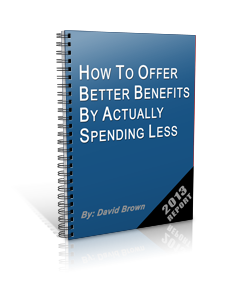
Even though we have defined a Full-Time employee under the terms of this act, understanding how we define Variable Hour Employees is challenging. Enrolling or dis-enrolling employees on a monthly basis would create an administrative nightmare for employers and regulators because of their varied hours worked. This challenge led the IRS to define periods that are key to qualifying employee service. This method is considered a safe harbor and only applies to Variable Hour Employees.
Variable Hour Employee example
You have a security guard that works as a fill in for people taking vacation. You cannot predict how many hours per week he will work, or even if he will work this week at all. In this situation you will be required to use the “Variable Hour Employee Safe Harbor” commonly known as the “Look-Back Period” or “Measurement Period” to determine if you will be required to offer this employee Health Insurance benefits or if you may be subject to a fine.
 The “Look-Back Period” Safe Harbor will only be utilized by businesses with Variable Hour Employees, such as Food Services and Hospitality Services. If you find yourself utilizing this method, you should make the Look-Back and Administrative periods as long as possible for the sole reason that your business will not want to pay for health insurance for these employees. Remember, if an employee works a consistent 30 hours a week for 90 days, they will be considered a full time employee and will not be able to be classified as a Variable Hour Employee.
The “Look-Back Period” Safe Harbor will only be utilized by businesses with Variable Hour Employees, such as Food Services and Hospitality Services. If you find yourself utilizing this method, you should make the Look-Back and Administrative periods as long as possible for the sole reason that your business will not want to pay for health insurance for these employees. Remember, if an employee works a consistent 30 hours a week for 90 days, they will be considered a full time employee and will not be able to be classified as a Variable Hour Employee.Safe Harbor for Variable Hour Employees
The “Look Back” or Measurement Period
The period of time you have to determine if your employee is Full-Time. This period of time may vary by business, but can only be a period of 3 to 12 consecutive months and must be applied equally across all categories of employees. For new hires after January 1, 2014, the Look Back Period begins on their first day of work.
The Administrative Period
A defined amount of time you have to enroll the employee in benefits, immediately following the Look Back Period. This period may last no more than 90 days.
The Stability Period
This period begins immediately after the Administrative Period, if the employee was determined to be a Full-Time Employee. The Stability Period must be a minimum of six (6) months or the length of the Look Back Period, whichever one is greater.
If the employee was determined to be a NON Full-Time Employee, then you must start the measurement period over again. Remember, for these employees you will need to do this calculation every month once they have completed the Look Back Period. Every month will be the completion of new Look Back Period from 3 to 12 months of employment.
These employees will also be counted in determining your Full Time Equivalent Employee number for determining if you will be classified as an employer subject to Obama Care.
Rehired Variable Hour Employee
An employee who is rehired or resumes service after at least 26 consecutive weeks of being away from work and no hours of service, may be treated as a new employee and the Look Back period for this employee will begin on their first day back at work.
If these standards are not met, then the employee is treated as a continuing employee. It will be critical for Business to track these employees to avoid penalties, and critical to understand how the IRS views rehired employees.
I understand that this information may be overwhelming. If you have any questions regarding this information please leave us a comment in the Comment box below and we will respond, or feel free to call us with your questions.



